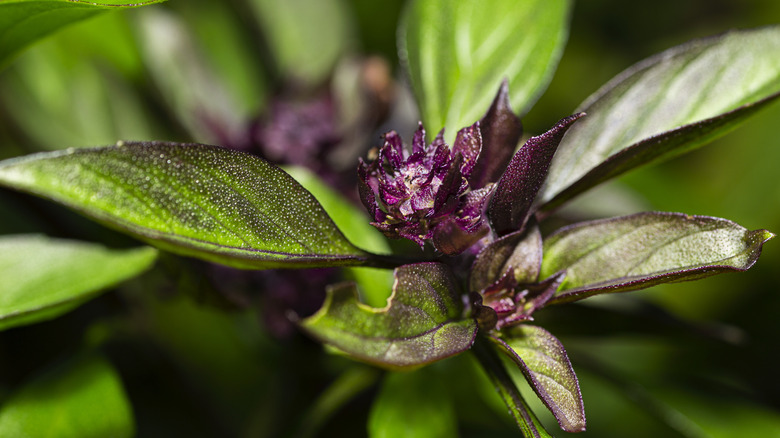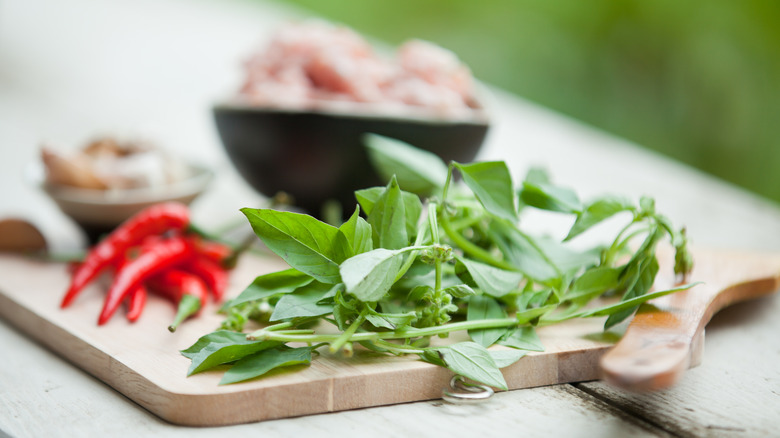What Is Thai Basil And What Does It Taste Like?
When thinking about basil, the first thing to come to mind is likely Genoese basil. As one of the most common varieties of basil to appear in stores, it may be the basil you grab by default for any recipe that calls for it. Yet, giving the herb section in your market another look may reward you with a different type of basil Bon Appetit hails as an irreplaceable addition to many dishes. Whether you're a seasoned chef or a home cook looking to experiment with new ingredients, Thai basil is worth a try.
Think beyond pestos, caprese, and other ways basil appears in Italian cuisine. Thai basil is best known for the way it lends bold and vibrant flavors to curries, stir-fries, and soups, playing a starring role in many Southeast Asian dishes. Thai basil's otherworldly flavor and aromatic aroma will change how you approach spicy, savory dishes, but what exactly makes this herb such a game-changing ingredient?
What sets thai basil apart
With over 40 varieties of basil in existence, Thai basil's unique look and aroma can help you pick it out from the crowd if you know what to look for. At first glance, Thai basil may appear similar to the more familiar Genoese basil. However, upon closer inspection, you'll notice that Thai basil leaves are smaller and pointier and often feature purple stems and flowers. While this distinctive appearance sets Thai basil apart, the aroma and flavor make it such a beloved ingredient.
When you first taste Thai basil, you'll notice a complex blend of flavors. While common basil offers sweet, earthy notes, Thai basil brings a "slightly savory, spicy, licorice-like" flavor, according to Cook's Illustrated. This combination of flavors, along with a "light anise flavor," as noted by Saveur, lingers as you cook with Thai basil. It's the reason Thai basil is a stand-out ingredient that should be considered in your next savory dish.
How to cook with Thai basil
A perfect complement to spicy, bold dishes, cooking with Thai basil adds layers of depth and complexity to any dish. Bon Appétit recommends approaching Thai basil in two ways: as a garnish or infused during cooking. Thai basil retains its flavor well, so its presence will not be lost if it's sprinkled atop grilled chicken noodle salad or cooked into a hearty coconut chicken soup.
For dishes where Thai basil can shine, take inspiration from how it is used in Thai cuisine. One of the most popular dishes featuring Thai basil is Thai basil chicken (Pad Kra Pao Gai), a stir-fry dish with chicken, chilies, garlic, and fish sauce tossed with Thai basil leaves. For a cozy and warming dish, try using Thai basil in Tom Yum soup, a spicy and sour soup staple of Thai cuisine. There are plenty of ways to incorporate Thai basil into your next dish, and you'll love it every time.


